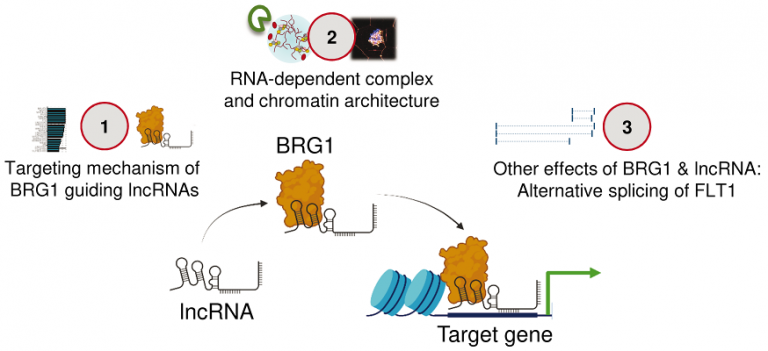

Research Details
-
Project Leaders
Prof. Dr. Ingrid Fleming
Institute for Vascular Signalling
Goethe University Frankfurt
fleming@med.uni-frankfurt.de
Dr. Mauro Siragusa
Institute for Vascular Signalling
Goethe University Frankfurt
Siragusa@med.uni-frankfurt.de
-
Research Staff
Anne Birke (PhD student)
anne.betula@t-online.de
Microproteins (miPs) are short peptides encoded by small open reading frames (smORFs – shorter than 100 codons) that have been implicated in the regulation of biological processes ranging from cell growth to cell signalling and metabolism. Using an in-house generated high-throughput proteo-genomic pipeline, we identified a large number of bona fide miPs, i.e. confirmed at the protein level, in human endothelial cells. Treating cells with interleukin (IL)-1β, to elicit endothelial cell activation and mimic vascular inflammation, profoundly altered smORF and miP expression. Interestingly, a portion of the novel endothelial cell miPs were translated from transcripts currently annotated as non-coding, including long non-coding RNAs (lncRNAs). In this project we will begin by characterizing the function of two human endothelial cell miPs encoded by smORFs within lncRNAs (lnc-miPs) and whose expression is altered in response to vascular inflammation. We will study the intracellular localization as well as the interactome of the lncRNAs and lnc-miPs and complement this characterization with gain of function (adenovirus-mediated overexpression) and loss of function (Crispr/ Cas9) approaches. As these two lnc-miPs are specific to primates and do not have a mouse homolog, all of the studies will be performed using freshly isolated or cultured (passage number 4 and below) human cells. Mechanistic insight into global alterations associated with the upregulation/deletion of the selected lncRNAs/lnc-miPs will be gathered through integrated omics approaches (transcriptomics, proteomics and metabolomics). This data will be used to identify appropriate signalling pathways and functional tests to study in more detail. To investigate the relevance of lnc-miPs for human vascular disease, we plan to identify lncmiPs in contractile and secretory vascular smooth muscle cells (VSMCs). To remain as close as possible to the native situation, we will generate our datasets using freshly isolated VSMCs from patients who underwent carotid endarterectomy (stable vs. unstable and early vs. advanced atherosclerotic plaques) as well as from healthy vs. diseased areas of aorta from patients with abdominal aortic aneurysms (AAA). We expect to select up to three lncRNAs/lnc-miPs for detailed analysis as described for endothelial cells. Also, an artery-on-a-chip with patient-derived endothelial and VSMCs will be used to determine the functional role of novel lnc-miPs in endothelial and vascular smooth muscle cell interactions. With this approach, we expect to demonstrate the relevance of novel lnc-miPs in human vascular disease.





